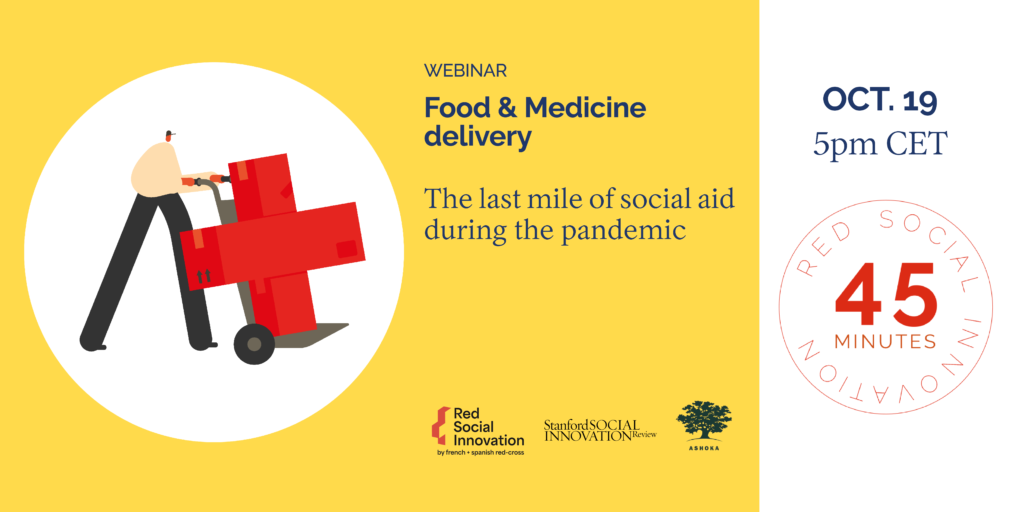
Offering essential services such as food or medicine to underprivileged and marginalised people, whether in times of peace, pandemic, disaster or conflict, is a great challenge. The Covid-19 crisis has affected vulnerable households in almost every country, a phenomenon amplified by self-isolating people.
While the International Red Cross and Red Crescent Movement has helped to safeguard this unprecedented period, social enterprises have also collaborated by being innovative in reaching the “unreached”. What did we learn from the past one year and a half? How can we build upon existing models to provide social services to what is referred to as ‘the last mile’?
Food Aid Delivery during the pandemic
Food security consists in having physical and economic access at all times to buy, produce, obtain or consume sufficient, safe and nutritious food. Because of the pandemic, an increased number of households are facing difficult socio-economic conditions across the world, which has increased the pressure on the social aid sector.
Over the past one year and a half in the private sector, food-delivery apps’ business have more than doubled, creating new behaviours and logistic chains. This year in the food sector alone, digital ordering and delivery have grown 300% faster than dine-in traffic since 2014. On the field, driven by the pandemic, some social enterprises have been inspired by home-delivery models to improve their social impact.
In Brooklyn, New York, the social enterprise Wellfare launched during the pandemic a new service of delivering nourishment to the food-insecure. Every fortnight, the company delivers a free box of healthy snacks, drinks, canned food and dry goods to households experiencing food hardship. Wellfare currently serves 1,000 households in New York City.
In Italy, the first country in Europe hit by the Covid-19 pandemic, the Italian Red Cross launched an initiative called CRI per le persone, allowing the volunteers of the association to bring psychological support, food and medicines delivery to the most vulnerable and isolated population. The project reached about 150.000 people and allowed the activation of over 55.000 services, benefiting from the Italian Red Cross widely spread network. Based on this experience, the French Red Cross developed Croix-Rouge Chez Vous providing psychosocial support (340.000 calls), food and medicine delivery (17.000) services in the whole country.
Humanitarian | How can logistics respond to assist vulnerable populations?
In completely different contexts, the last mile distribution in disaster- or conflict-affected areas faces several hurdles such as damaged infrastructures and roads, scarce transportation resources, insufficient information and lack of coordination among relief actors. The last mile distribution has always been a significant challenge for the humanitarian relief chain.
Yet, innovation in the humanitarian sector already offers some material, technical and humane solutions. In Zambia for instance, the social enterprise Cola Life harnessed the distribution chain of Coca-Cola company to deliver medicine against diarrhea by placing pills or tablets in the empty spaces of the bottle packs. Logistics of Coca Cola allows the transport of medicines in rural areas without adding any supplementary cost.
All these solutions have been introduced by social entrepreneurs during ‘45 minutes’, the first of a series of online events dedicated to bridging the gap between the humanitarian sector and the social entrepreneurship ecosystem, organised by RED Social Innovation, the Stanford Social Innovation Review and Ashoka.


